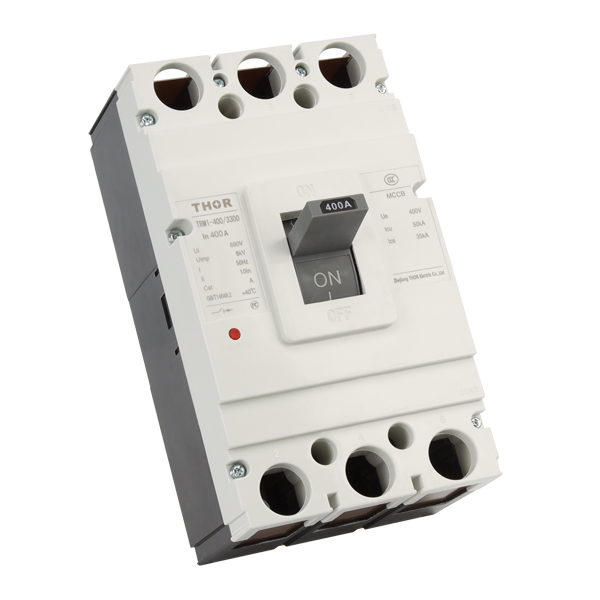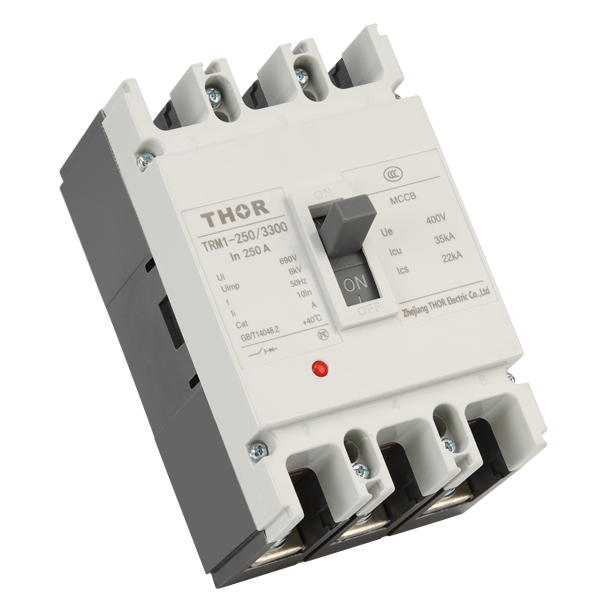Circuit breakers protect against overcurrent by automatically disconnecting power, while isolation switches manually disconnect circuits for safe maintenance.
Introduction
At the heart of contemporary technology is electricity, without which, power can be very dangerous to deal with if not regulated properly. Hence, it is important to know about the safety devices of electrical system. Electrical systems typically utilize circuit breakers and isolation switches to perform basic circuit protection duties to maintain the safety and integrity of the whole system. Although they may seem similar to the untrained eye, they are actually formed for very different purposes. The basics This chapter looks at basics aspects and functions of these devices are outlined, paving way for addressing their differences, and utilization.
Types of Electrical Safety Devices
Security devices are a must for electrical installations for the prevention of accidents and long life of electrical installations. Such as a circuit breaker that will automatically cut off electricity should an overload or short-circuit manifest itself. By alerting those in charge of that particular complex, they are able to respond in a timely manner to prevent electrical fires and damages to the system. In contrast, an isolation switch is not intended to provide protection from overcurrent, and is only used to ensure that an electrical circuit is able to be completely de-energized for service or maintenance.
The Need to Distinguish the Two
Learn the difference between a circuit breaker versus an isolation switch in electrical maintenance and operations, and how choosing between the two can greatly affect the safety and efficiency. While a circuit breaker is common in home electrical panels to protect against electrical overload, an isolation switch is necessary in industrial settings to de-energize machinery so maintenance can be safely performed. Here the demarcation is regarding the electrical readings so that that electrical standard are adhered to and safety protocols are followed.

What is a Circuit Breaker
A circuit breaker is an essential safety device that automatically cuts off the power flow in an electric circuit when the load exceeds the ampere limits carbon monoxide detector. This automated interruption is designed to protect the house from electrical fires and to save appliances from failure by killing the power at the outlet when current draws are too high.
Definition and Basic Function
In layman terms, a circuit breaker is an automatically operated electrical switch. A fuse is engineered to safeguard an electrical circuit from the harm of overcurrent, usually a consequence of an overload or short circuit. At a basic level, when the electric current runs up more than a safe predetermined threshold, it starts monitoring this electric current and will cut the current if it exceeds the defined value.
Different Types of Circuit Breakers and Their Uses
Circuit breakers are available in a variety of types, all of which are appropriate for different applications and load demands. Common types of fluidinclude:
- Single pole circuit breakers: These are generally used for residential electrical wiring in order to control circuits, and hence they are made to handle a corresponding load, such as not more than 20 amps.
- Double Pole Circuit Breakers: As the name reflects, these circuit breakers are mainly utilized in homes mainly for large appliances such as dryers and ranges and are designed for 30 amps and can interrupt two energized wire simultaneously.
- GFCI (Ground Fault Circuit Interrupter): GFCI breakers are designed for use in moist environments (such as in and or around a bathroom or kitchen) and detect ground faults to prevent electric shock by interrupting the circuit.
- AFCI (Arc Fault Circuit Interrupter): prevent fires due to arcing faults in home electrical wiring.
These types correspond to the installation type(s) and capacity and are, therefore, appropriate for a range of applications residential to industrial.
How Circuit Breakers Protect Electrical Circuits
This causes the circuit breaker internal mechanisms to trip. Thermal magnetic circuit breakers, for example, use a bimetallic strip that will heat and bend with the heat of the excessive current and break the circuit (ther) in a magnetic field (magnetic). Events like these take places within a few milliseconds preventing it from any potential risk of the generation of heat or any kind of fire.
What is an Isolation Switch
The role of an isolation switch (also known as a disconnector) is key in electrical safety, yet its purpose is often misunderstood or de-valued. Isolation switches, unlike circuit breakers, do not protect against overcurrent but are mainly intended to provide a physical break in the circuit with the load de-energized to permit safe maintenance or repair of the wiring or apparatus.
Definition & Main Use
An isolation switch is a switch to isolate a circuit or a part of a circuit from the main power supply. Ensures that electrical equipment or circuits may be de-energized, which ensures no electrical hazard associated with itenced and is a necessary thing to make perfect installation, maintenance, and repair work. As this switch also severs the relationship between the circuit and the power source, preventing the flow of electricity.
A Few Different Types
Isolation switches are designed and function differently based on the application:
- Knife Switches: This is one of the oldest types; they have a hinged arm that is used as a gate to allow the completion or rupture of a circuit.
- Rotary Isolators: Typically found in industrial environments, these isolators open or close the circuit using a rotating action, making it more challenging to switch off accidentally and can be protected from the elements using an enclosure.
- Load Break Switches: It has to switch a load and it is able to interrupt current (rated) also similarly.
Each kind is chosen according to the voltage of the electrical system, current requirements and the environmental circumstances in which they are used.
Importance of Isolation Switches in Security & Maintenance
Isolation switches are a basic safety device for electrical engineering, and are primarily employed in industries using commercial installations. They visually separate the circuit, which is a must safety requirement in many maintenance. In high-voltage applications, when an isolation switch is opened, a visible air break instead of simply a separation of sprung contacts lets technicians know for certain that the vehicle circuit is isolated.

Key Differences Between Circuit Breakers and Isolation Switches
Understanding the distinctions of circuit breakers and isolator switch is fundamental in electrical safety and system management. The two are essential devices, but their uses, mechanisms, and safety related features all differ, and therefore the context in which they are used is different in each case.
Functional Distinctions
First and foremost, circuit breakers protect electrical circuits by automatically shutting off the power supply when they detect an overload, or a short circuit. This protection keeps the wiring from being damaged, and it also reduces the chance of a fire. On the other hand, isolation switches have no protective interrupting capacity under overcurrent conditions. DC circuit breakers, on the other hand, have as their ultimate objective that they can be disconnected from the electrical circuit completely for either repair or maintenance. A visible air gap is then provided such that no current flows through the breaker.
Operational Differences
Circuit breakers are an automated system, which means they act after detecting a fault without human interface. For instance, if you overload a standard home circuit breaker, it will trip, disconnecting the circuit in milliseconds to prevent an electrical fire. However, isolation switches have to be physically operated to open or close a circuit so they are much more a long-term solution, suited to scheduled maintenance and safety compliance than lightning reflexes blocking or passing supplies.
Safety Implications of Each Device
Circuit breakers and isolation switches also have vastly differing safety implications. Circuit breakers are meant to save lives and protect property from current that is too high to support. Isolation switches do not protect against current overflow but guarantee that power is fully off before any service or maintenance process, safeguarding workers from electric hazards while performing these activities.
Applications in Electrical Systems
If a circuit breaker or an isolation switch should be used often depends on the specific requirements of the electrical system. For example, in residential, commercial and industrial electrical panels, circuit breakers are vital in order to always hold electrical related faults on the bay. However, isolation switches are important in situations where equipment needs to be regularly maintained to ensure these jobs can be completed safely.
Applications in Electrical Systems
Seeing how these circuit breakers and isolation switches are used in electrical infrastructure will give us an idea of where to apply which type of circuit protection in these systems which will make us clear that both these have their different roles to play and are used at different technical places in these systems. The devices are designed to meet different needs, from home security to industrial maintenance, and provide for safe and effective electricity use in a wide range of scenarios.
Common use-cases for Circuit Breakers
All residential, commercial and industrial electrical system has an integral circuit breaker. In a residential setting, they save us from potential circuit overload among other potentialities that can lead electrical fires or appliance malfunction. For instance, a normal 20-amp circuit breaker in a house will certainly trip if the current gets to 20 amps, halting the whole point of power to prevent warm from developing in the wires, causing a potential fire danger.
Circuit breakers in commercial and industrial settings serve as both a mean of preventing overloads and safeguard against damaging sensitive equipment from immediate power surges. In the data center, where reliable power to operate is paramount, the circuit breakers operate to contain any failure to a sector of the overall network, such that an incident in one area does not disrupt the rest. The automation involved needs to perform at a processing speed that allows it to react quicker than what might otherwise have been done by a qualified technician.
Routine Adjustments And Emergency Isolation Switch Applications
Isolation switches are most commonly used in scenarios which require regular maintenance or when safe isolation from power sources should be enabled. Isolation switches are another example which is found in industrial systems where machinery has to be fully de-energized before maintenance can begin to ensure that there is no accidental energization. This is especially the case in high-voltage environments where behavior that allows power to be accidentally restored can result in death.
In emergency situations, isolation switches provide the ability to shut off power as fast as possible, allowing emergency workers to work in a safer environment. For example in an industrial site where a fire has broken out being able to isolate parts of the plant quickly can help to prevent the spread of damage and allow personnel to exit and fight the fire in safer conditions.
Enhancing Safety Protocols
It is pretty clear that both circuit breakers and isolation switches have an equally significant role to play as far as safety protocols in any electrical installation are concerned. The correct application of circuit breakers (including thermal fuses), ensures that any fault or abnormal conditions are quickly attended to: it automatically cuts off the power, thus eliminating any electrical hazards. When an isolation switch is in operation, the circuit is broken visibly and physically so that maintenance teams can work safely with 100% confidence that the circuits they are working on are completely de-energized.
